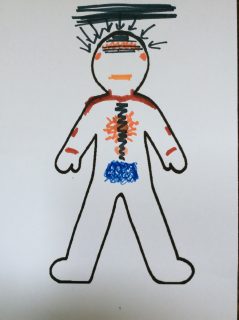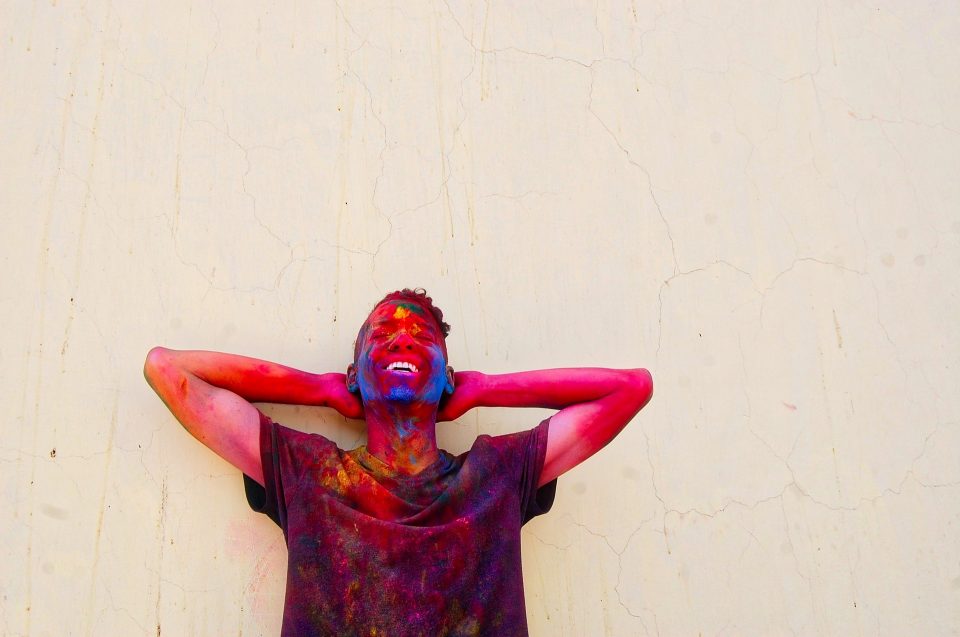When things get complicated and troublesome it can not only be difficult to articulate what we are experiencing but we can also become disconnected from our emotions and keep carrying on regardless; regardless of the effect it is having on our well-being.
We know that being able to understand and articulate our emotions allows us to tap into our resources to manage those emotions, it also builds our resilience and maintains our wellbeing.
Emotions are felt in our bodies, they are not in the mind. How we feel manifests itself in our bodies. For example, butterflies in the stomach, goose bumps and heartache. Emotions also affect our bodies responses and can result in, for example, faster breathing, sweaty palms and aches and pains.
The art of body mapping
Art moves beyond the limitations of words and provides our clients with an alternative language they can use to communicate the depth and complexity of their embodied experiences and emotions. One approach that we can use to help clients connect with and therefore manage emotions is body mapping.
A mini case study
I found body mapping particularly helpful for a client who suddenly started to experience some unexpected emotional and physical responses that had been triggered when talking about a meeting with a particular individual. My client started to doubt himself and was dismissing his feelings and embodied experience as silly and daft. However, enabling my client to connect with those experiences was important if he was going to be able to successfully manage those situations, an aspect of why he had come to coaching.
Body mapping enabled my client to externalise and make tangible these felt experiences allowing him to be able to see them as real and valid. Connecting with them, describing them and talking about them meant he has been able to think about ways to manage these responses. It also enabled him to measure the level of the responses when they occurred and evaluate the effectiveness of his emotional management.
Using body mapping
Body mapping is used in a variety of ways from full length body mapping using the outline of a client’s body on a very large sheet of paper through to the use of standard body templates. This latter approach is an accessible way into body mapping and I have shown below one I did for myself exploring how the pandemic was affecting my body last year.
The template I have used can be found at http://clipart-library.com/clipart/rTLoRyALc.htm where there are a variety of different body templates that can be used.

A body map exercise exploring tensions in my body
When using body mapping, I ask clients to draw using colours, shapes, textures and marks that describe to them what they are experiencing in their bodies. This process helps clients to reflect on the what they are thinking, feeling and experiencing. It is a non-verbal way for clients to express things such as pain, discomfort and frustration which may be difficult to articulate.
Exploring a client’s body map
When complete, I ask my client to tell me about their body map and, through noticing and inquiry, help my client to connect with, make sense of and think about those emotions and felt experiences. I do not judge or offer my own interpretations.
There is also no pressure to label an emotion with a specific known word. I am happy to use my client’s words of their body map which may be a colour, a shape or a texture. This is a language that we can continue to use through the coaching programme as appropriate. For example, the client in the case study above talked about hooks pulling down which were images he had drawn within his body map. He often referred to these hooks as a way of explaining how strong his emotional responses were and how well he felt he was managing those responses. It gave us a safe language to use.
References:
Trauma and Expressive Arts Therapy by Cathy Malchiodi, The Guildford Press 2020
The art of body mapping – research article by Michelle Skop, 2016


One comment on “Body mapping – connecting us to our emotions”